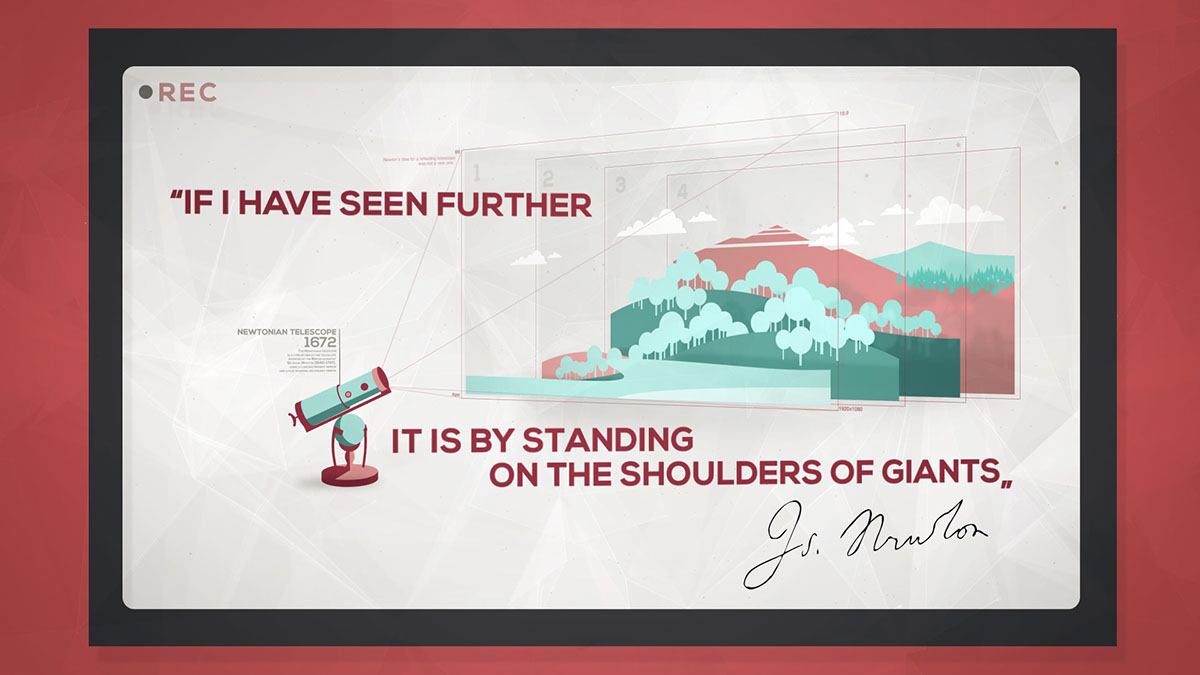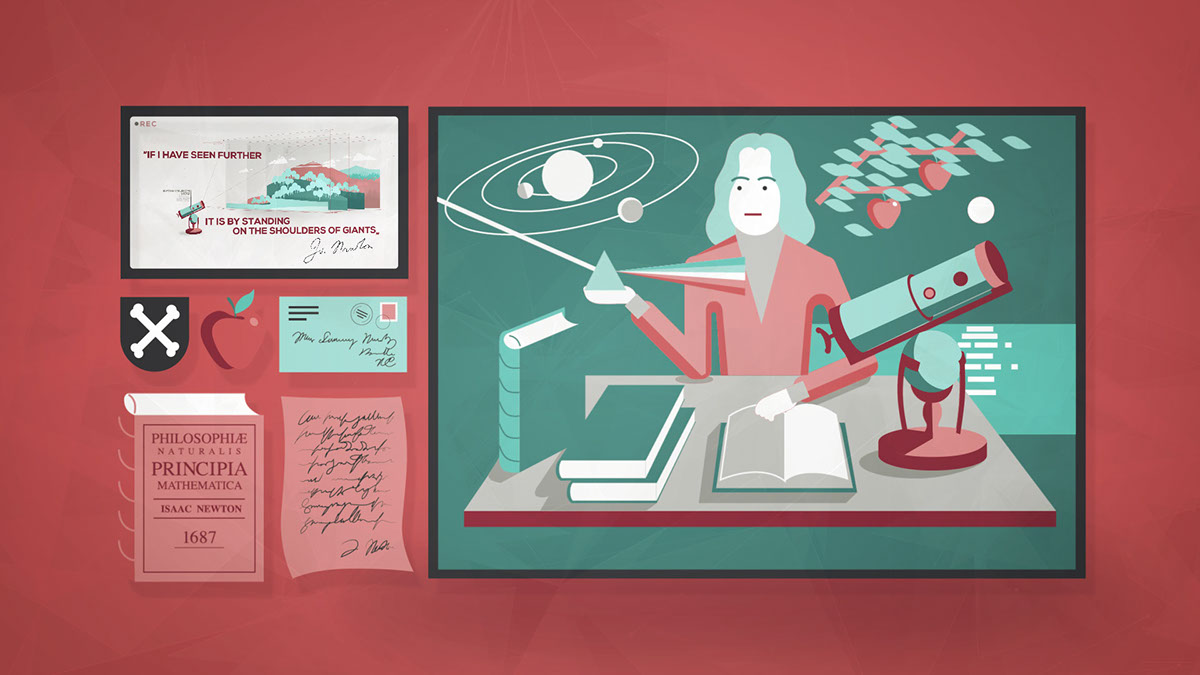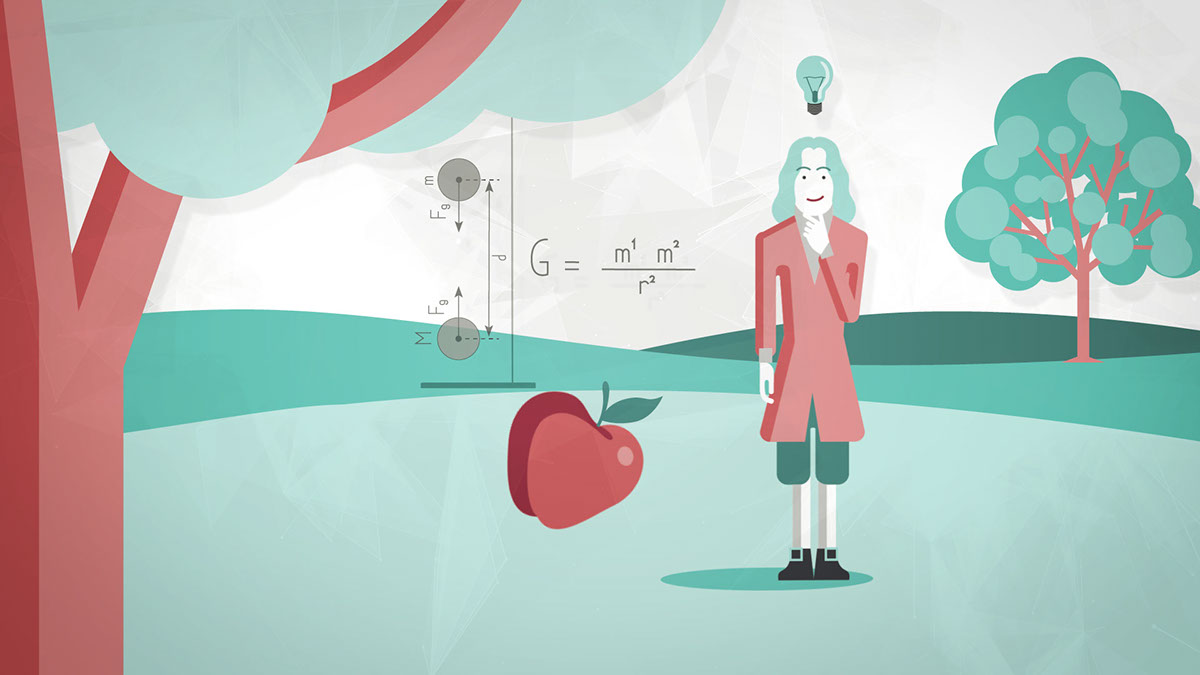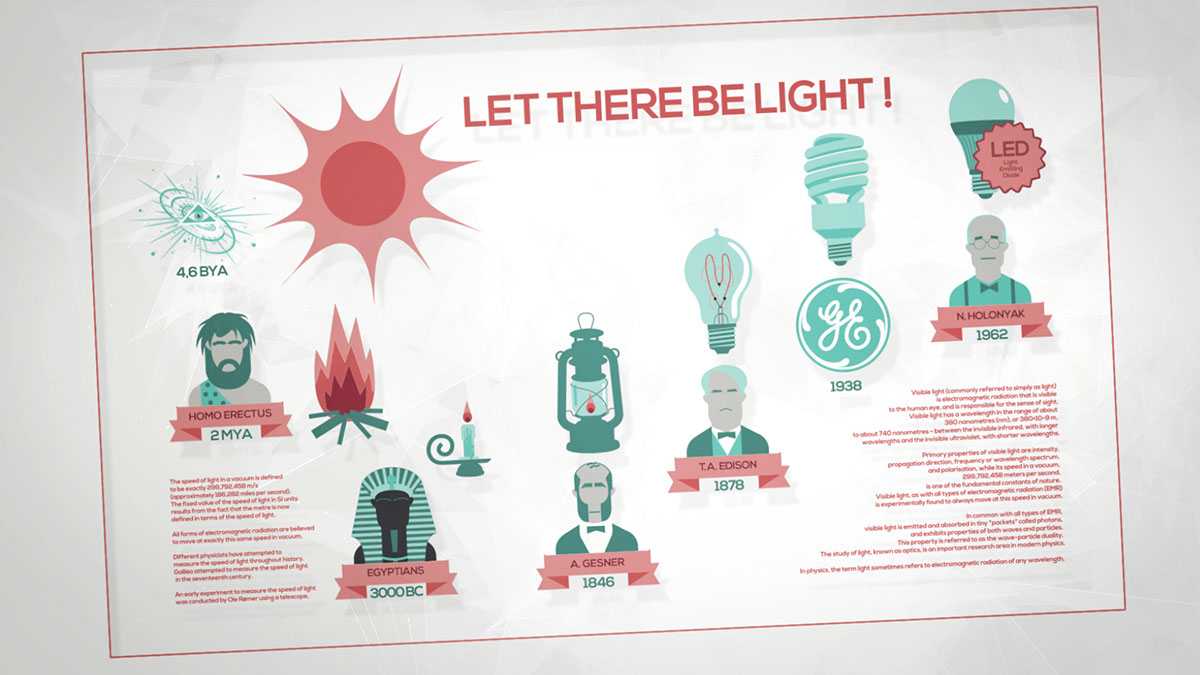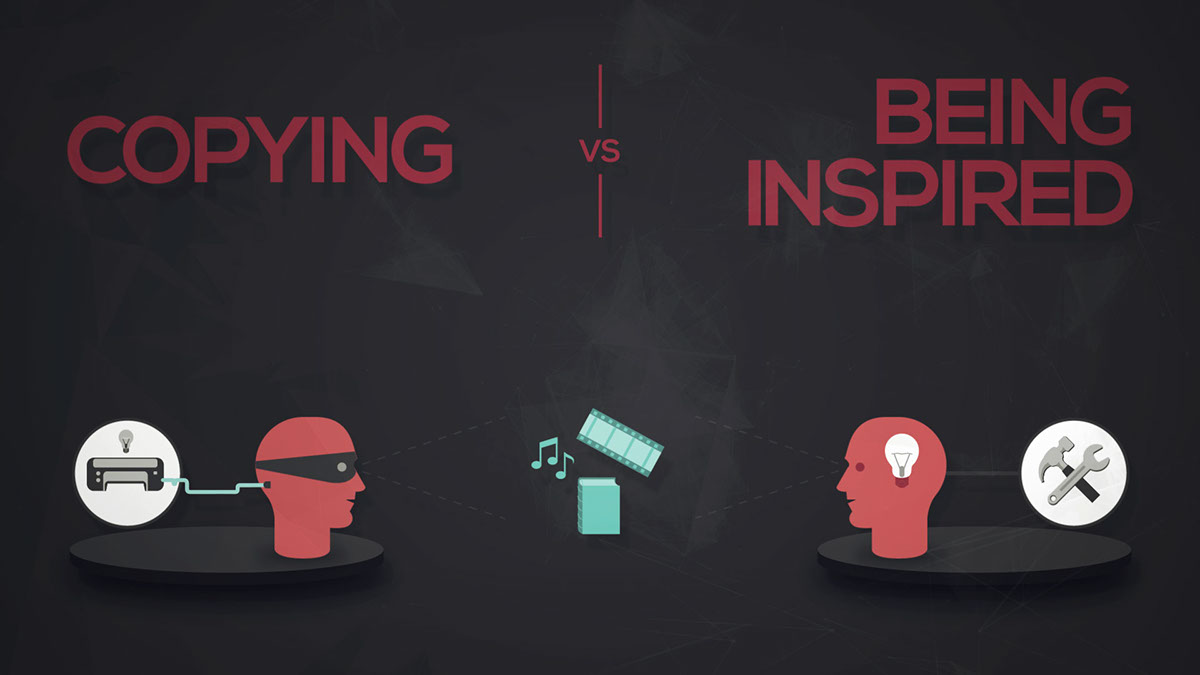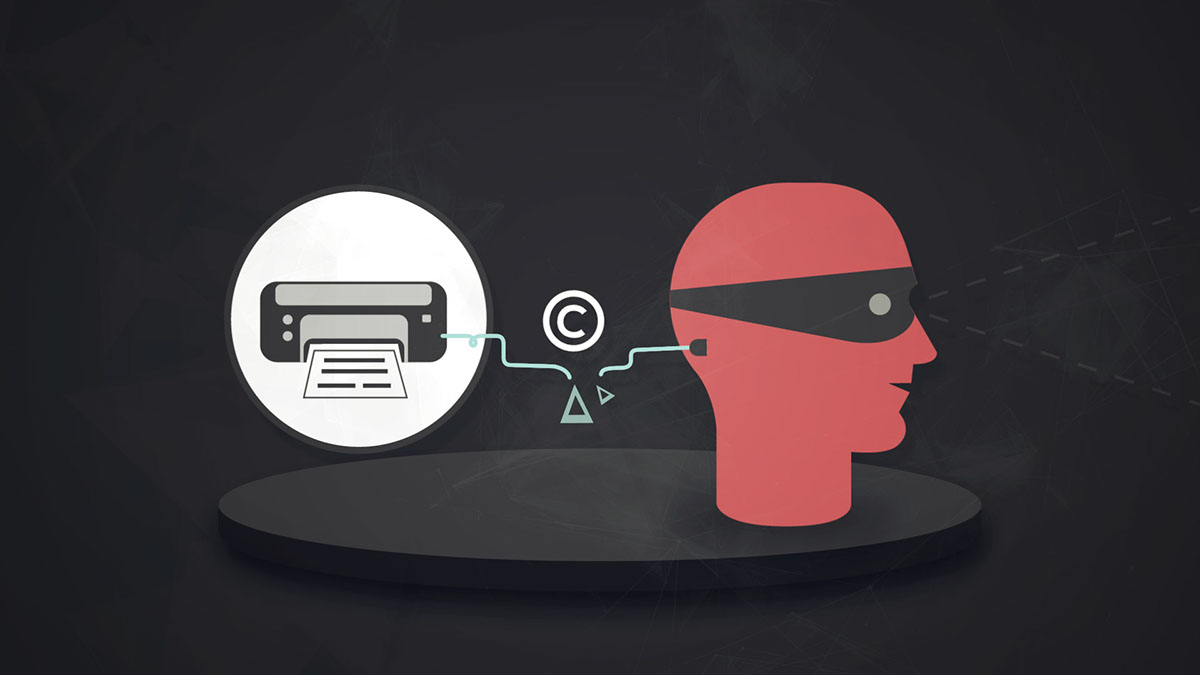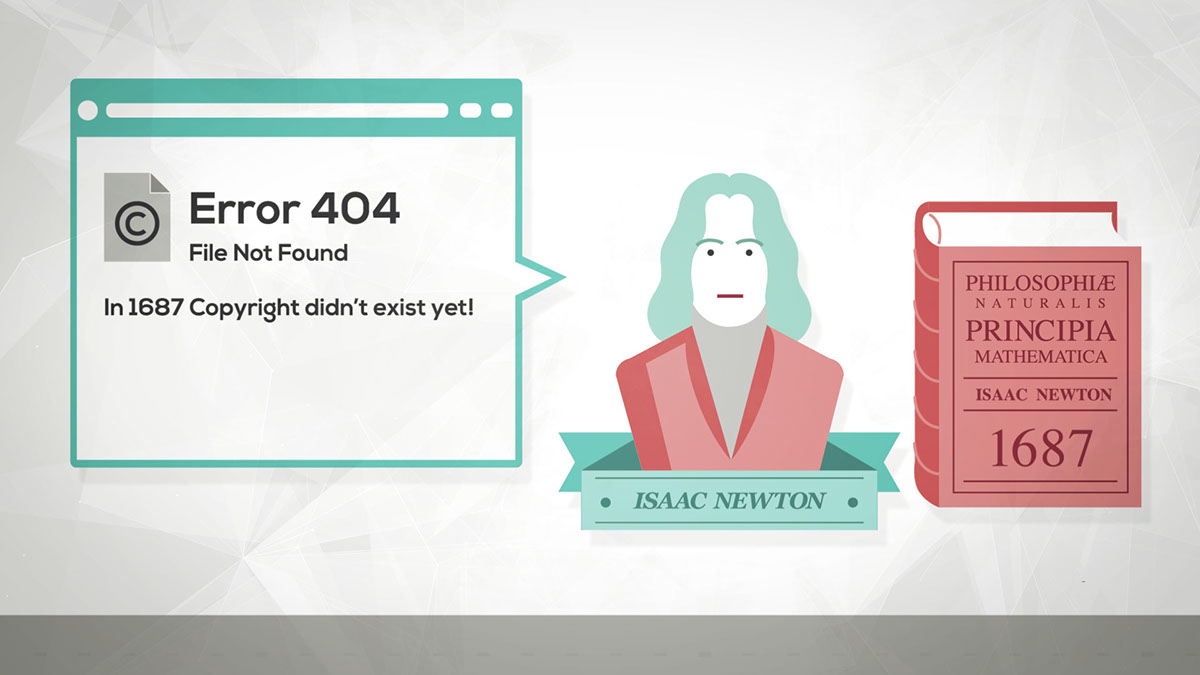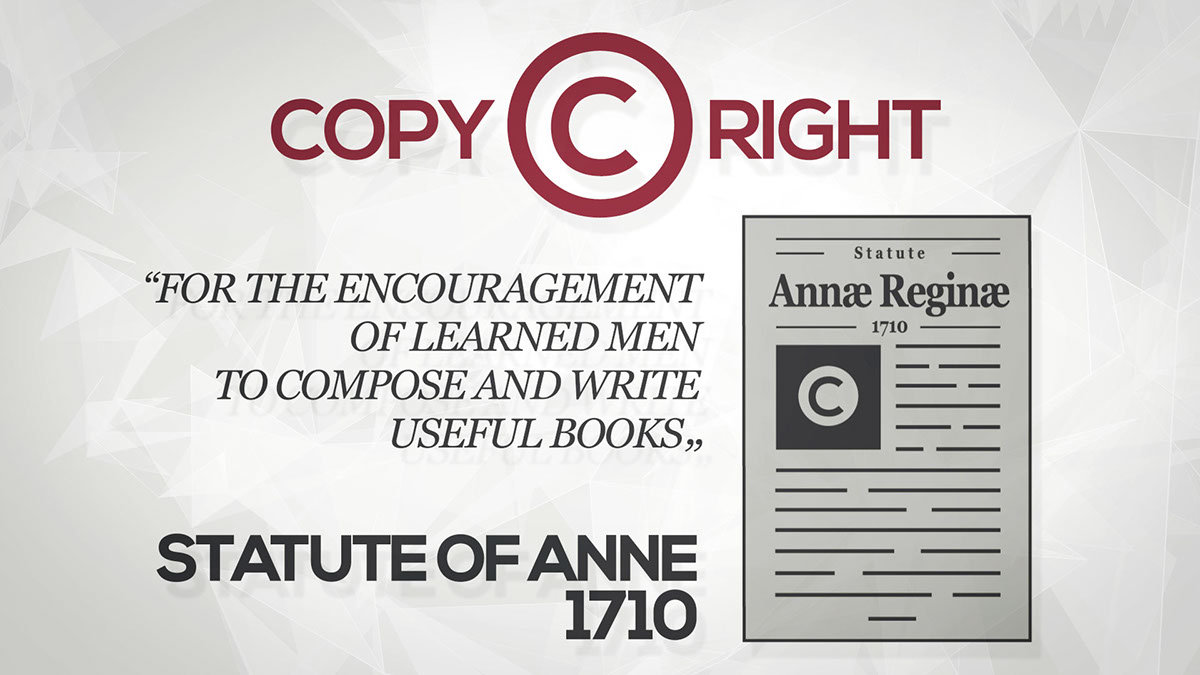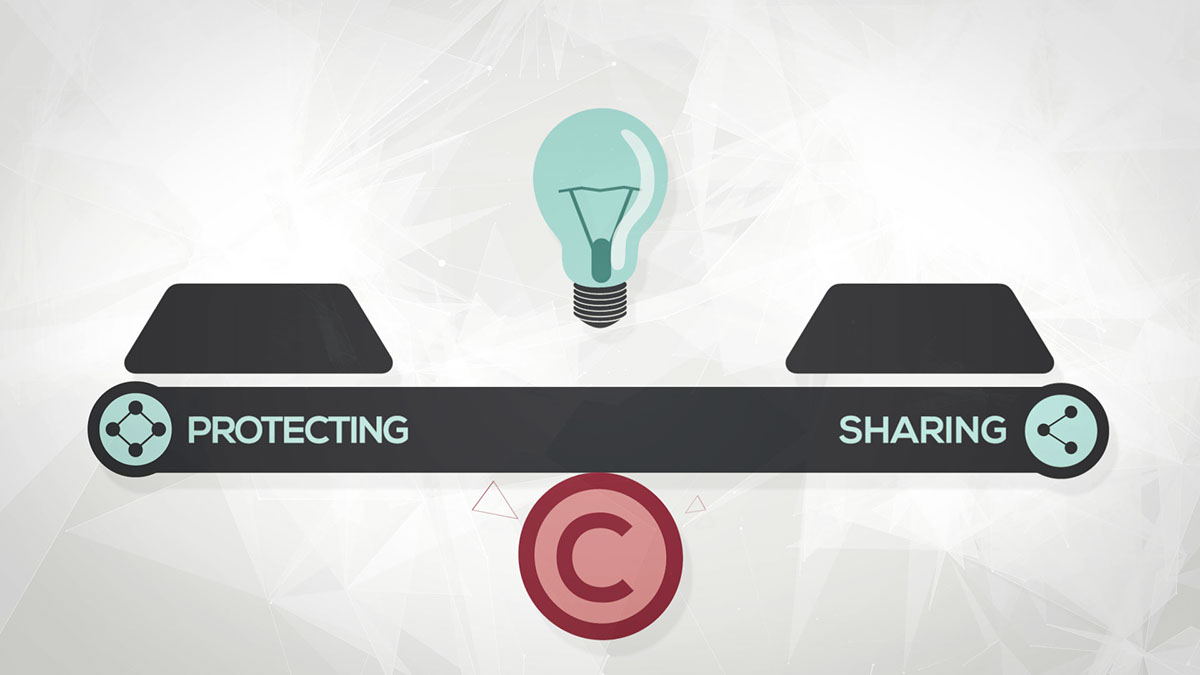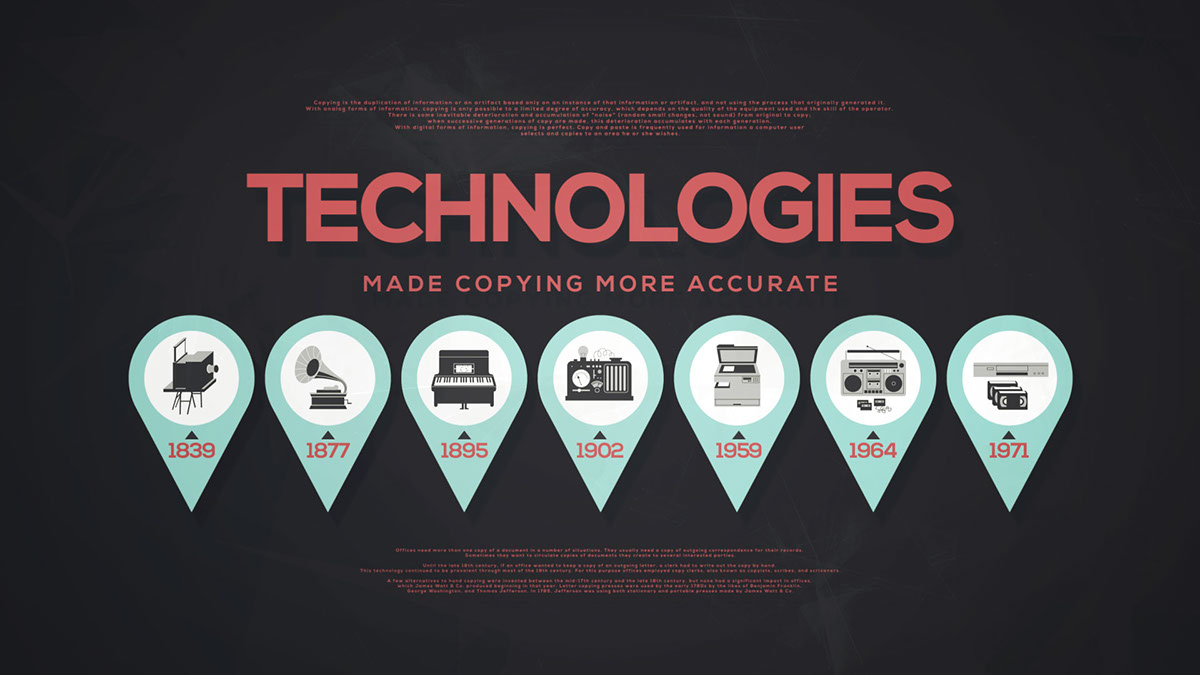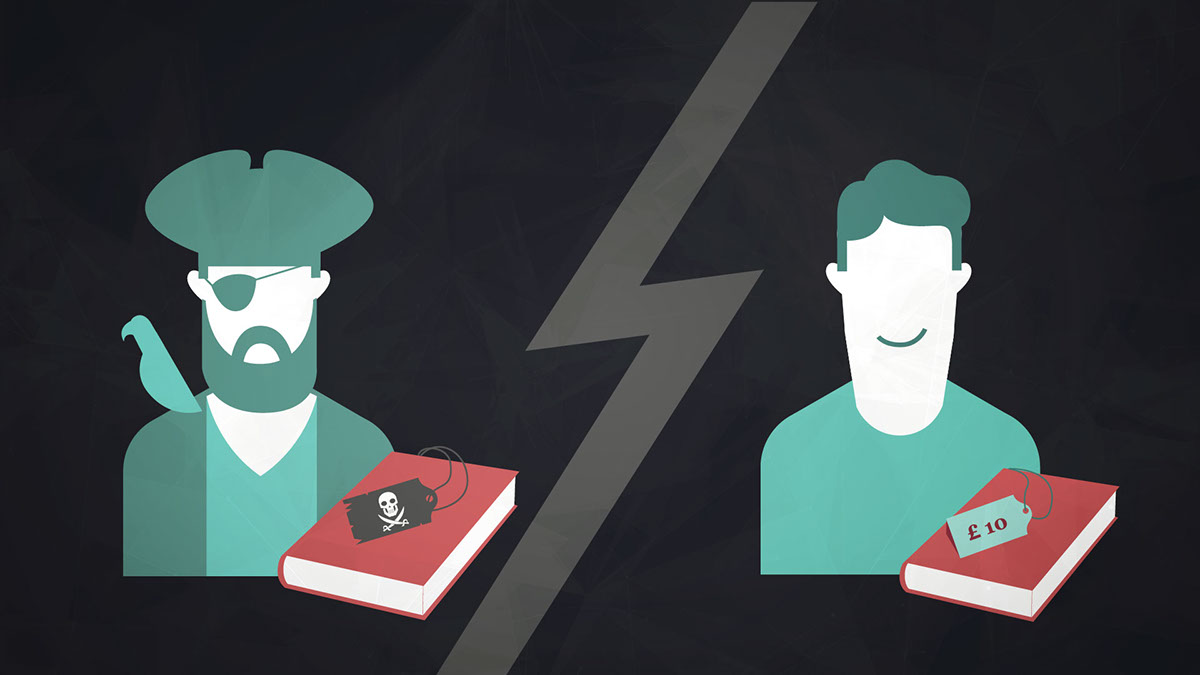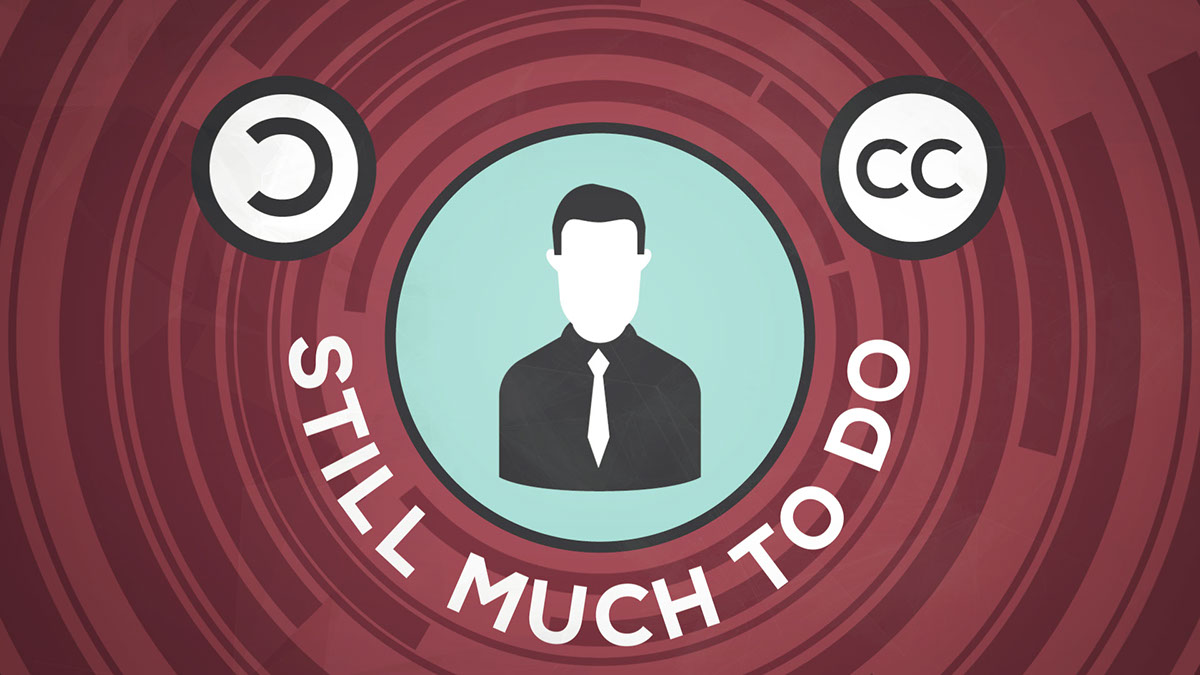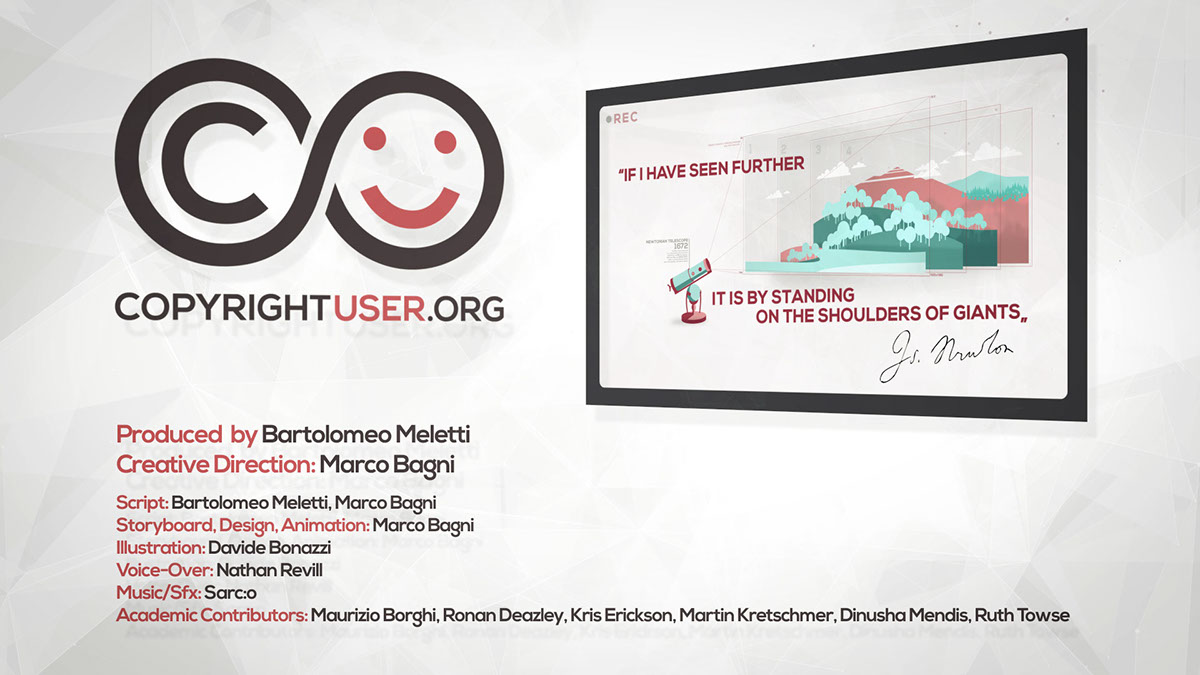Copyright & Creativity
The video “Copyright & Creativity” has been produced with the goal of making copyright compelling to creators and average Internet users, trying to demonstrate that it is not just a set of rules but an interesting world worth exploring. This video is part of the project copyrightuser.org
The video “Copyright & Creativity” has been produced with the goal of making copyright compelling to creators and average Internet users, trying to demonstrate that it is not just a set of rules but an interesting world worth exploring. This video is part of the project copyrightuser.org
CREDITS
Produced by Bartolomeo Meletti
Produced by Bartolomeo Meletti
Creative Direction: Marco Bagni
Script: Bartolomeo Meletti, Marco Bagni
Storyboard, Design, Animation: Marco Bagni
Illustration: Davide Bonazzi
Voice-Over: Nathan Revill
Music/Sfx: Sarc:o
Academic Contributors: Maurizio Borghi, Ronan Deazley, Kris Erickson, Martin Kretschmer, Dinusha Mendis, Ruth Towse
BRAINSTORMING // SCRIPT // STORYBOARD
The creative process for this video had been very fascinating since the early stages, here some insights:
We approached leading copyright experts and sent them a short questionnaire about the relationship between copyright, creativity and technology, with the idea of writing an accessible script based on their answers.
The responses presented some common themes: since the invention of the printing press, the development of new technologies has made copying more and more accurate, requiring copyright law to adapt to this evolution; in recent years, media has become more interactive, audiences are becoming users and creators at the same time; the main challenge for copyright law is to adjust to these rapid changes without losing its original function: to encourage learning and the spread of knowledge while preserving economic and moral rights of authors and creators. In other words, one of the most delicate goals of copyright is to strike a balance between protecting creative works and allowing the public to use them.
We thought that the quotation “If I have seen further it is by standing on the shoulders of giants” – meaning that every new creation is based on something that has been created in the past – would have been an effective way to express these concepts. This metaphor is commonly referred to Newton, but apparently it was first attributed to Bernard of Chartres. Even though copyright does not attach to the work of Newton as a theoretical physicist, it does apply to Newton’s Principia as a literary work. The first edition of this book was published in 1687, when copyright did not exist yet, and the second edition in 1713, only 3 years after the first-ever Copyright Act was introduced.
In our view, all these elements create a nice story to introduce the mechanisms of copyright law to the public.
Here follows a visual summary of the creative process:

STYLEFRAMES
